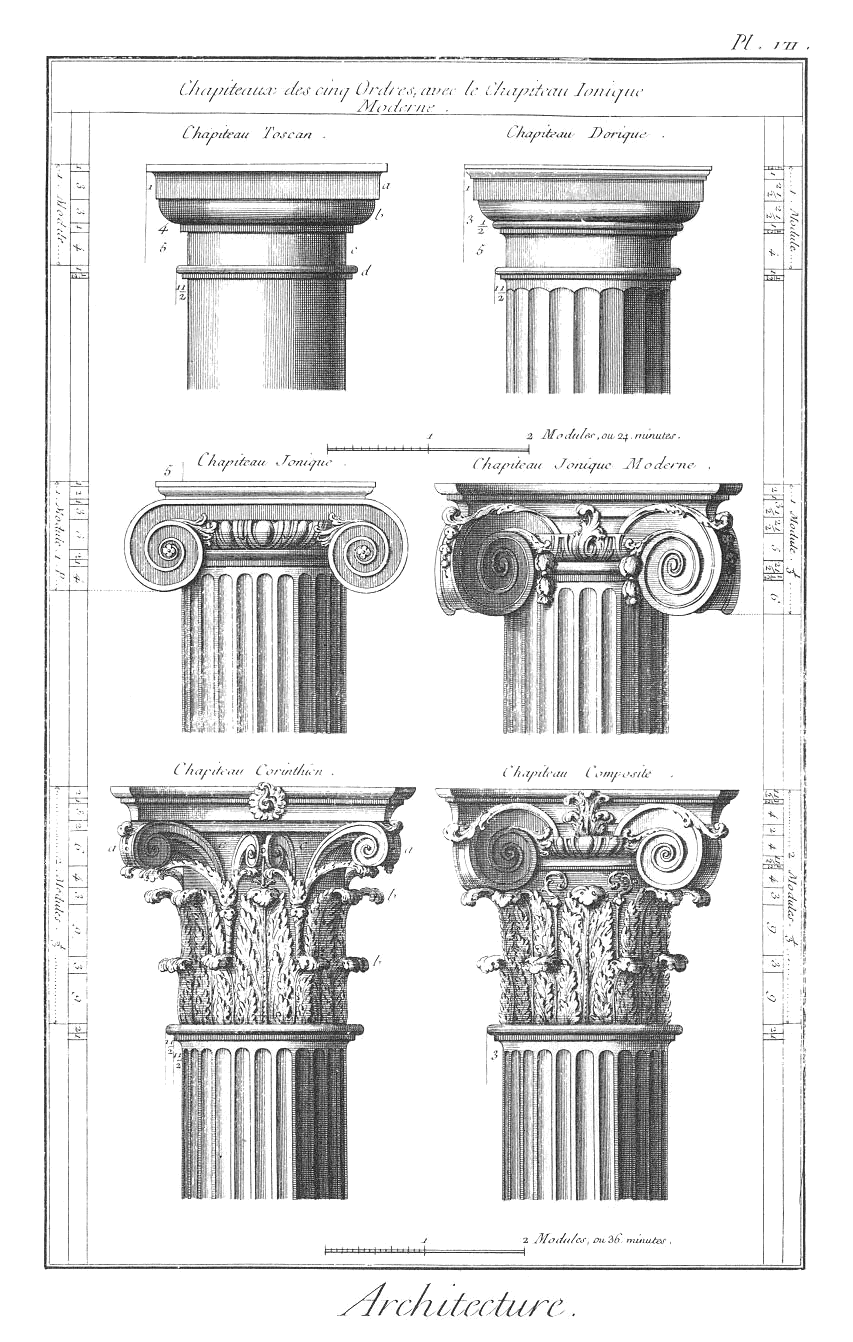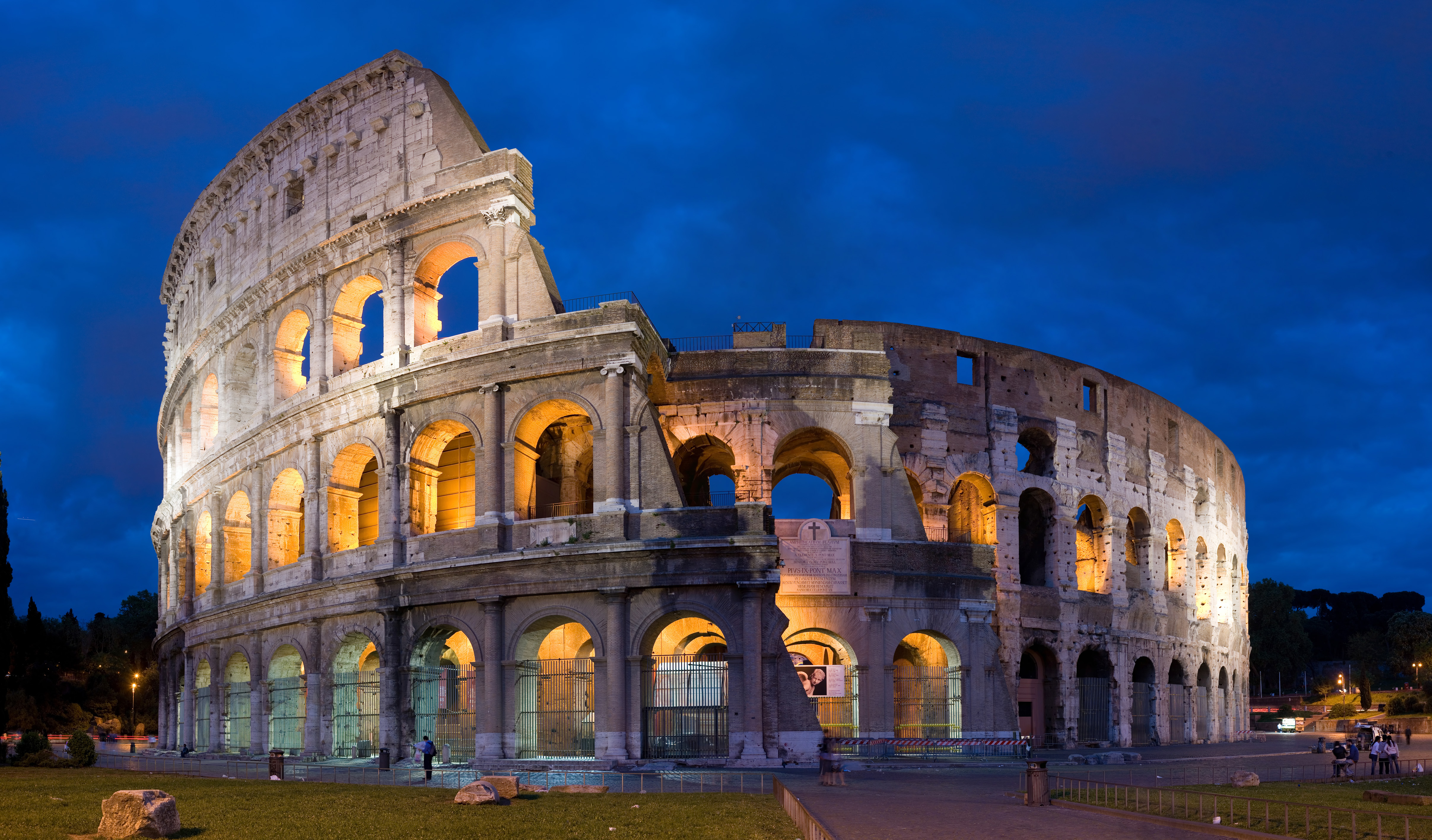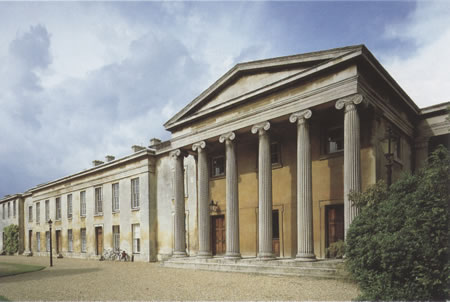 Someone requested that I write a few introductory posts on architecture, and I am more than happy to comply! I thought that it would be fun to start with the architectural orders that were popular in ancient Greece. (I thought about waiting to write this post until I reached this same chronological point in my intro/survey posts, but I'm too excited to wait. So, sorry for the anachronism. Just pretend that the architectural posts are separate from the other survey posts.)
Someone requested that I write a few introductory posts on architecture, and I am more than happy to comply! I thought that it would be fun to start with the architectural orders that were popular in ancient Greece. (I thought about waiting to write this post until I reached this same chronological point in my intro/survey posts, but I'm too excited to wait. So, sorry for the anachronism. Just pretend that the architectural posts are separate from the other survey posts.) The three Greek architectural orders are called Doric, Ionic, and Corinthian. These orders are easily defined by a key characteristics, namely the capitals (decorative heads) at the tops of the columns. There are several other architectural features which define these three orders (and there also are variants within these orders, as you can see in the drawing on the right), but I don't want to overwhelm anyone. For now, we'll just focus on the capitals of these basic columns.
The three Greek architectural orders are called Doric, Ionic, and Corinthian. These orders are easily defined by a key characteristics, namely the capitals (decorative heads) at the tops of the columns. There are several other architectural features which define these three orders (and there also are variants within these orders, as you can see in the drawing on the right), but I don't want to overwhelm anyone. For now, we'll just focus on the capitals of these basic columns.As you can see from the pictures above, the Doric capital essentially is split into two simple sections. In contrast, the Ionic capital is decorated with large volute scrolls and the ornate Corinthian capital is decorated with acanthus leaves and scrolls. If you want to see some other examples of these capitals (and some other awesome capitals in general), click here and here.
Throughout history, the Greek architectural style has been adopted and revived by many other cultures. The Romans quickly adopted the Greek architectural style (really, they borrowed tons of their artistic ideas from the Greeks), and the term "Classical style" can refer to either Greek or Roman art. However, Romans put a twist to Greek design by sometimes using a superimposed order on buildings which had more than one story - each of the successive stories are decorated with a different order (this is a deviation from the Greeks, who consistently would use one order throughout a whole building). For example, you can see a superimposed order on the outside of the Colosseum (Rome, 70-80 AD). The Doric order is on the bottom level, the Ionic is on the middle level, and the Corinthian is on the top:
 You can also see another drawing of the Colosseum orders here
You can also see another drawing of the Colosseum orders here(Note: the fourth level of the Colosseum also is decorated with Corinthian capitals - but these capitals are atop pilasters instead of columns).
Note the large Ionic columns that decorate the porch
 Thomas Jefferson, Monticello, Charlottesville, Virginia (1770-1806)
Thomas Jefferson, Monticello, Charlottesville, Virginia (1770-1806)
Jefferson used Doric columns for the porch of his home
 Jacques-Germain Soufflot, the Panthéon (Ste.-Geneviève),
Jacques-Germain Soufflot, the Panthéon (Ste.-Geneviève),
Paris, 1755-1792
See the large Corinthian columns?
 Pergola, Historic Pioneer Square, Seattle (first built 1909)
Pergola, Historic Pioneer Square, Seattle (first built 1909)
 Thomas Jefferson, Monticello, Charlottesville, Virginia (1770-1806)
Thomas Jefferson, Monticello, Charlottesville, Virginia (1770-1806)Jefferson used Doric columns for the porch of his home
 Jacques-Germain Soufflot, the Panthéon (Ste.-Geneviève),
Jacques-Germain Soufflot, the Panthéon (Ste.-Geneviève),Paris, 1755-1792
See the large Corinthian columns?
So, where have you most recently seen some columns with Doric, Ionic, or Corinthian capitals? I most recently saw Corinthian columns on this iron pergola:
 Pergola, Historic Pioneer Square, Seattle (first built 1909)
Pergola, Historic Pioneer Square, Seattle (first built 1909)